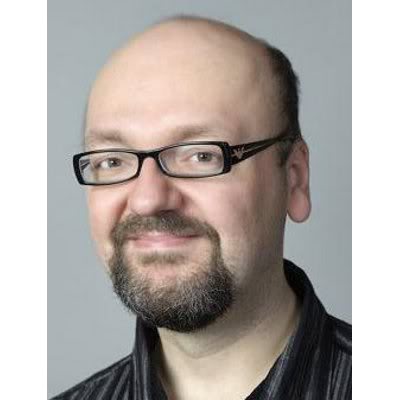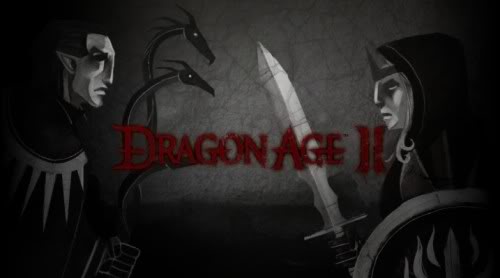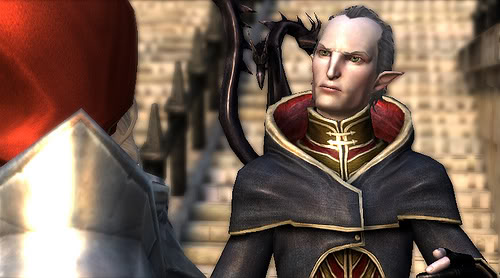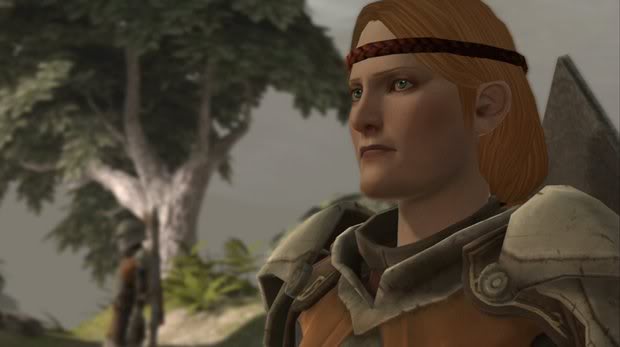This post has not been edited by the GamesBeat staff. Opinions by GamesBeat community writers do not necessarily reflect those of the staff.
I recently had the chance to ask David Gaider, head writer for the Dragon Age series, some questions about Dragon Age 2. He gives us a look into what a shorter development time means for the writers and how his team approached the different narrative style for the sequel.
How was it different writing a framed narrative for Dragon Age 2? What were the ups and downs to this kind of story?
David Gaider: It’s an unusual story structure for us, considering we normally start the player at a particular point in time and just proceed from there…you follow your character through every step they take.

With a framed narrative, we were able to focus instead on important parts of the main character’s life and have events develop over a period of time rather than happening all at once. This also allowed us to show quests having an effect in the next time period rather than only focusing on what the player does in that quest in the present.
On the downside, it does require a segmentation of the story that wouldn’t otherwise be required — meaning you have to bring the player to a bottleneck in the plot where they can be jumped forward into the next time period, a jump that can’t be reversed once it’s done. Therefore, you need a way to telegraph to the player, “anything you want to complete in this time period you’d better do now,” and that proved to be more problematic to do than we’d thought. Still, on the whole, I’d say it allowed us to tell a very different kind of tale.
What was it like to write a protagonist that actually spoke throughout the game?
DG: Not as different from a non-verbal protagonist as one might think. We changed the interface to a Mass Effect-style dialogue wheel with paraphrased responses, with some added icons to help indicate to the player what the tone of their response would be (so there’s fewer surprises).
If anything, it was a matter of getting used to writing these paraphrases, but the array of options was much the same as we’d done previously. One benefit I really liked, from a writing standpoint, was allowing the player to take part in dramatic moments such as speeches — whereas previously a non-player character would have needed to do that — and also back-and-forths in conversation, which is a bit more natural to write than having the player select every single response.
What was the writing process like for the new characters?
DG: It was no different than we’ve done previously. The writing team looks at the plot we’ve laid out and starts thinking of the sorts of characters that would fit into it. If we have a conflict between mages and templars, for instance, we look at characters that would be naturally tied into that conflict –someone on the side of the mages or on the templars specifically — who can offer the player a personal perspective on the conflict. This allows that conflict to be less of a nebulous concept and instead something that affects them personally.
Once we have an array of characters that we like, it’s a matter of assigning them to writers who feel like there’s something about that character they feel inspired by. If nobody feels thrilled to write a character, that’s probably a good indication we need to go back to the drawing board.

How difficult was it to fit in content from Origins and Awakening into the second game so it all made sense?
DG: That’s harder than one might think, considering that the plot of the second game was only tangentially related to the first — it didn’t involve the same main character and didn’t take place in the same location. So we could refer to events that occurred elsewhere, and occasionally have characters appear, but didn’t want to force the connections to a point where it seemed unrealistic.
Of the things that we did fit in, it was a matter of trying to track all the different choices from Origins and Awakening and figuring out which choices we could or should accommodate. Accommodating them all just isn’t feasible, but neither is ignoring every decision and having no ties to the previous game just so we don’t contravene anything. It’s a tricky situation. Our primary mission was to provide bonuses for the player who did import their previous decisions, acknowledgment of their accomplishments, and some nods to characters and stories they were already familiar with, without giving anyone the impression that they had to play the previous game in order to understand what was going on.

What were your favorite or least favorite characters?
DG: My favorite was probably Aveline, the soldier from Ferelden who joins your party early in the game. I like characters that play against type, and Aveline was a female character who was strong and independent yet also vulnerable, and at the same time she didn’t exist simply to be romanced (and thus defined by that romance). She didn’t fall comfortably into any archetype, and that’s unusual both in fantasy stories as well as for female characters in particular. So I’m proud Luke Kristjanson (one of the writers on my team) did such a fantastic job with her.
As for least favorite, that’s hard — I don’t really have any characters I don’t like, though I do have characters that I’m disappointed with, ones I look back on and regret cutting important elements out of, or ones that I wish we’d been able to do more with. First Enchanter Orsino was one of the main antagonists, and I felt like we ended up giving him less screen time than he really needed to tell his side of the story, which is unfortunate.

What were your favorite and least favorite parts of writing the sequel?
DG: The answer to both of these is the shorter time line we had to work with, versus the first game. The negative side is obvious: You have less time to do everything, less time to iterate, and less opportunity to do little extras or follow up on moments of inspiration.
The positive side of that probably wouldn’t be obvious to anyone outside of game development: When you have lots of time to work on a project, you can often use that time in a very nonconstructive way. You stop being objective about a part of the story because you’re spending so much time with it and start second-guessing yourself. When that happens, it is literally possible to spend years developing a game and yet never make any significant progress. And that’s not good, either. Somewhere in the middle would probably be ideal.
First published on Digitalhippos.com.
